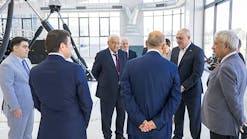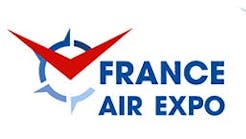Many years ago, in Elmont, NY, I sat in Sister Margaret Cyanide’s 8th grade class. Teaching moments were simple then; ‘education’ and ‘training’ were synonymous. With an arm like Nolan Ryan, Sister Cyanide could launch a chalk saturated eraser at me, the missile defying the laws of physics as it greased past students with bare millimeters of clearance to smack me above my ear, leaving an indelible chalk mark on my dark hair, proof to my Mom that her youngest child had committed some misdemeanor.
Folks, I’ve been off the radar for several months; I moved and now my job is to instruct industry people, international certificate holders, FAA inspectors, and NTSB investigators about various aviation safety topics. I meet lots of good people; good discussions abound; lots of ‘career stories’, both good and bad.
In my nondestructive inspection (NDI) class the other day, I was talking to the students about the five areas of concentration when certifying, contractin,g or surveilling NDI-certified specialists: environment, documentation, calibration, training, and personnel. Each area of concentration commands certain individual attention, yet they are often intertwined, e.g. documentation includes calibration procedures, training records and personnel certifications.
But of these five, it has always been my experience that training sees the greatest abuses; not necessarily in NDI, but in other forms of instruction. Let’s face it, training records are easy to confuse and receive the least attention from overseers. But I’ve always been attracted to them; whether as an accident investigator, an airline auditor, or air operator inspector, I have found that certificate holders often hide training anomalies in plain sight. And kinda like Khan Noonien Singh, I say, “They task me, and I shall have them.”
Educating and Training
But, first: what’s the difference between educating and training? Some may argue: they’re the same. But in high school, did we receive driver’s education or driver’s training? In many cases, both; driver’s education was a stand-up class with an instructor; we were often tested on lessons … while testing our teacher’s patience.
But training is personal; it often involves face-to-face interaction, more responsibility on behalf of both parties, even when training to drive a car. Teaching my sons to drive required patience and a superior knowledge; I didn’t tell Chris to read chapter seven or give Dan a multiple choice on what to do at the Stop sign. For good or bad, I taught them how to drive, then sat back and let them chauffer me around to get used to the reins.
And, so, is training; giving the ‘student’ a chance to experience the task before leaving him/her to do it themselves, always being within earshot should questions arise.
But training is also a one-time event; we don’t retrain … beyond requalification or recertification, that is. But I’ve been discovering over the last six months that, in the strange Land of the Training People, everyone has different views on what qualifies as training, with no limits on what is to be demonstrated. Many wanna-be instructors suddenly assume a Tim Allen voice and, instead of “more power,” use the mantra of “more training,” like it should be fitted with a turbocharger. I’ve been going back and forth with those who are convinced that we should stuff 5 pounds of training in a 1-pound bag, which is equivalent to the other metaphor used with similar bags.
Training is Familiarization
Training is familiarization; that’s why we coin the term ‘FAM’ classes. Training is a foundation from which the greater experience evolves. When I trained mechanics on the DC-10 Gross Flow check, I demonstrated the tasks … then went back to Memphis. If they had questions, the newly trained mechanics would either reference the maintenance manual or review the work package; I didn’t give them my phone number. If there was a variation from one tail number to the next, these mechanics would go to the manual. And that’s what training is: a foundation.
And that brings me back to paragraph four’s point, about hiding training anomalies. For example, a Part 145 repair station is contracted to work on an operator’s aircraft, either for a Part 121 air carrier or a Part 135 air taxi, each with a Continuous Airworthiness Maintenance Program (CAMP). Now, per the FAA, the repair station (RS) must work on that operator’s aircraft per their CAMP, meaning they must follow, e.g. the maintenance manuals provided or approved/accepted procedures. This doesn’t mean the RS mechanic has to memorize the operator’s General Maintenance Manual, but must be trained to know where to find answers and in what resource. This might require four to eight hours of indoctrination training; it’s a general FAM course in, possibly, numerous customers’ CAMPs.
This should not, however, be the basis for accelerated training, a kind of one-training-fits-all model. FAM indoctrination training allows the RS mechanic to understand where he/she can reference information that applies to all the operator’s (or operators’) CAMP questions. But it doesn’t apply to, e.g. Phase check training; one phase check does not resemble the others; they must be trained to separately. Look at a small commuter aircraft whose phase checks are broken into several phases, e.g. flight controls, engines, etc. Because a large portion of the phase checks are redundant does not allow for the checks’ tasks to be treated equally. A heavy inspection of engines doesn’t prepare one for a heavy inspection of flight controls; you can’t rig the two ailerons the same way you rig the two elevators.
Unfortunately, in my experience, many inspectors don’t look for these sleight-of-hand tricks any certificate holder can pull; there are others, but this example gets the point across. Times are changing; experienced instructors are teaching inspectors, investigators, and their industry allies what to look for to boost aviation safety … particularly, their safety.
Teaching moments are important. Some teaching moments are like one of Sister Cyanide’s chalk erasers to the head, leaving behind a day long reminder. Hopefully, other teaching moments are a little more permanent … and effective.





